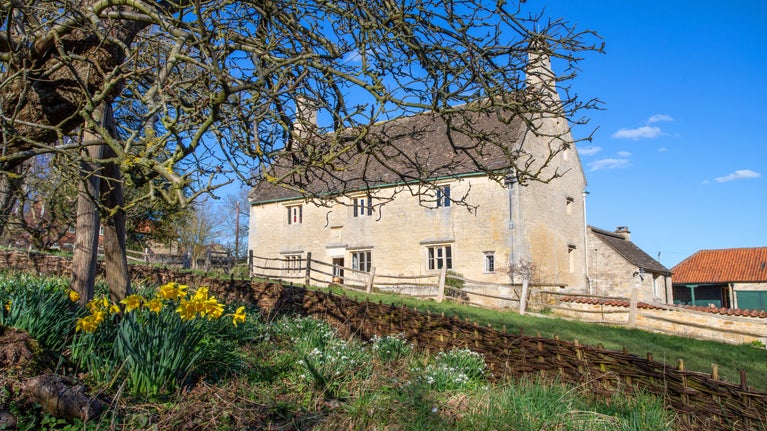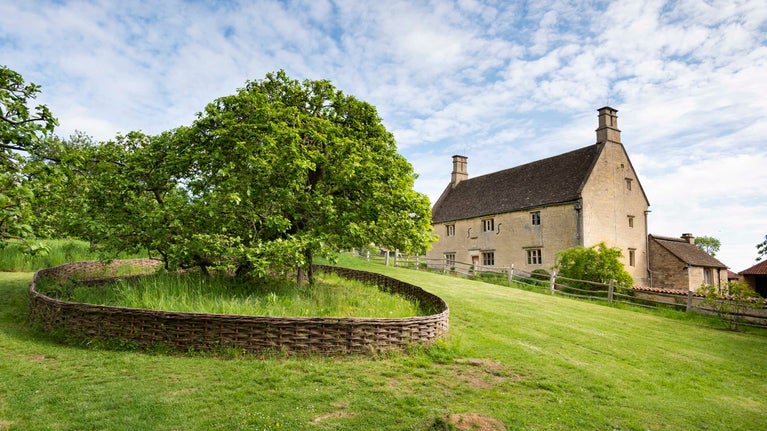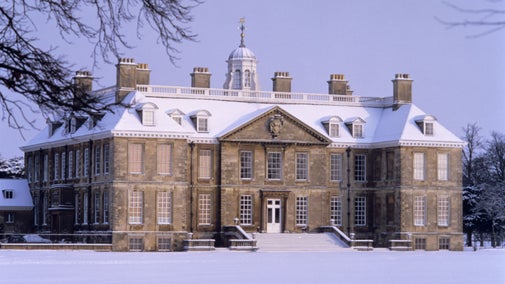
Discover more at Woolsthorpe Manor
Find out when Woolsthorpe Manor is open, how to book your visit, the things to see and do and more.

Woolsthorpe Manor is where Isaac Newton saw an apple fall from a tree, experimented with refracted light, and tried to solve the system of the universe - all before he was 24 years old. Since his death it's been a place of pilgrimage for scientists from around the globe. Discover the manor house where he was born, visit the science centre and immerse yourself into the world of scientific discovery.
The manor house at Woolsthorpe is typical of many historic houses in this part of the Midlands. Most of them have long farming histories. Woolsthorpe Manor, however, is particularly special as it's where Sir Isaac Newton was born, grew up, and made some of his most important discoveries.
Find out more about booking your visit to the Manor House here.
Inside the house, Newton's Chamber is set up to resemble what it would have looked like in 1665-1666. This was when a young Newton was working here in what's known as his 'Year of Wonders'.
It is the room where he used a prism to split light into rainbow colours. Stand at the window and you'll also see the apple tree that inspired his thinking on gravity.

The orchard at Woolsthorpe Manor is home to a very special apple tree. Newton's apple tree is intertwined with his discovery of the law of gravitation – a story Newton himself told. This is the very tree from which an apple fell and caused Newton to ask the question: 'Why do apples always fall straight down to the ground?'.
The tree first put down roots around 400 years ago and people have travelled to visit it as Newton's apple tree for at least 240 years. It's a 'Flower of Kent' apple tree, a traditional variety, which produces cooking apples which are green with a red flush, of varying sizes.
Today the tree is pruned regularly to keep it healthy; it continues to grow and bear blossom and fruit. A low barrier has been installed around it to protect the roots and give it some ‘breathing space’.
A photo by the tree is an essential part of a pilgrimage to Woolsthorpe Manor.
In 2015 apple pips from our iconic tree were taken on the Principia mission by British astronaut, Tim Peake, to the International Space Station. The pips then spent six months floating in micro gravity as part of the ‘Pips in Space’ project and then landed back on earth in 2016 to be nurtured into young trees.
British ESA astronaut Tim Peake handed over the Newton’s Space Saplings to their new homes and then planted a Space Sapling in the historic orchard at Woolsthorpe, not far from Isaac Newton's legendary gravity-inspiring tree.
The space sapling is temporarily at the National Trust's Plant Conservation Centre, for checks on its root development.
The orchard is the perfect spot to enjoy some quiet contemplation. Choose a comfortable spot to relax and maybe do some cloud gazing (that's number 33 on the '50 Things' challenge).
While visiting Woolsthorpe's gardens, be sure to admire the sundial and use the sunshine to tell the time.

In our Science Centre, children of all ages - even grown-up ones - can get hands-on with some of Isaac's most famous experiments. Have fun observing, experimenting and discovering.
The centre invites you to learn about the principles of Newton's work and how it resonates today. There are mysteries to unravel, problems to solve and questions that need answering.
The distorted mirrors offer a chance to play with light, testing refraction and reflection. There's also a chance to peer at one of the blackest blacks and try to grab a holographic apple.
Newton was driven by the question, 'what keeps a planet in orbit or an object on the ground?'. You can ask this question too while testing his theory of universal gravitation with the elliptical orbits in the gravity well.
Walk in the footsteps of Isaac Newton by taking a short stroll from Woolsthorpe Manor to St John the Baptist’s Church, his parish church in Colsterworth.
Starting at Woolsthorpe Manor, the walk takes in two villages, which today have expanded and almost merged. However you can still get a sense of the pastoral environment that Newton called home and that influenced his work.
Newton walked from Woolsthorpe Manor to worship at St John the Baptist's Church every week, passing the brook on Water Lane and then crossing the River Witham.
Two generations of his family are buried at the church. Although, Newton himself is buried in Westminster Abbey in London.
Newton helped fund the church's upkeep throughout his lifetime. Today you can see the font in which he was baptised and a sundial carved by him as a child.
St. John the Baptist's is open daily from 9am to 4pm, with varying Sunday services. Check the church website for specific service times.

Find out when Woolsthorpe Manor is open, how to book your visit, the things to see and do and more.
Read about the history of Woolsthorpe Manor and the impact it had on its most famous resident, Isaac Newton.

Refuel and enjoy tasty food and drink in Newton’s Barn, and make sure to browse the gift shop for a special gift or something to remember your trip by.

Families can explore, experiment and discover Newton's story and science at Woolsthorpe Manor.

Historic houses and buildings are full of stories, art and collections. Learn more about their past and plan your next visit.

Explore the diverse range of houses and buildings in Nottinghamshire and Lincolnshire, from historic churches and country houses to a Victorian workhouse.
